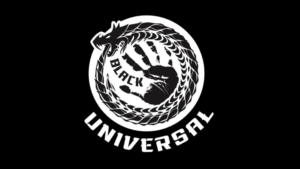Point of view | Carol Bergman
If ever there has been a time for towns and cities in the United States to begin a truth and reconciliation process, including reparations, it is now. The festering wounds of enslavement and Jim Crow are distorting and polarizing civil discourse and stymieing progress. At a recent Zoom presentation of the Concerned Parents of New Paltz to the Black Studies Department on the SUNY New Paltz campus, I was alarmed by the tenor of the discourse, particularly the accusation that some of the “white liberal” racial justice initiatives in the town, in the years before I arrived, were merely “performative.” I’ve been struggling with that word, and its implications, ever since. Are white liberals the enemies of racial justice progress, or are they champions and compadres? That should be a rhetorical question. Unfortunately, these days, it isn’t.
In a town of 14,700, 84% of whom are white, according to the most recent Census, several of the Concerned Parents in New Paltz are black, or have black partners and bi-racial children, or have fostered or adopted children of color. For 30 years, these devoted parents have been defending and advocating for their children, and others. They have supported and campaigned for a new black school superintendent and a black member of the School Board. Their efforts have been targeted, ceaseless and successful. Yet the town itself has not, as yet, had its transcendent, meta reckoning with its slave society past, which is why efforts thus far may feel like token “performative” gestures. I don’t see them that way; they are way stations on the path to a more fulsome truth and reconciliation process facilitated by trained professionals.
New Paltz is a monument to the Dutch, British and French Huguenot slave-holding families; many of their descendants still live here and the extant houses on Historic Huguenot Street (HHS), many with signage that omits mention of slaves or the Lenape land that was stolen, are financially maintained by these descendants. HHS has evolved their narrative and the tours have improved, all welcome progress, but still not enough in the larger context of systemic narrative change.
I arrived in New Paltz in the spring of 2018 as the University was taking testimony about the renaming of the dormitories, most of which were named after so-called “founding” slave-holding families. The testimony and ensuing discussion were, in itself, similar to a truth and reconciliation commission; it was open and public. The decision, ultimately, was to change the names of the dormitories, which the black students, but not only the black students, found offensive. Indeed, from the outside looking in, it seemed that many professors and students — white, black, international or indigenous — welcomed the process and learned from it. Although there might not have been much or any reconciliation with the descendants of the slave-owning families, there had been a lot of fact-finding, more of a “truth commission,” than a “truth and reconciliation commission.” And, perhaps, that is all we can hope for until federally mandated reparations are legislated.
It’s been more than eight years since Susan Stessin-Cohn, now the New Paltz Town Historian, ceremoniously buried the skull of an African slave she found in the Historic Huguenot Street archives in the old French cemetery on Huguenot Street, and 20 years since a memorial sign and bench was installed in front of 176 Huguenot Street, though it’s more than likely that the African American Burial Ground is underneath the lawn of the adjacent property at 174. Stessin-Cohn believes that there are many other as yet unexcavated burial grounds in town, though what we euphemistically call a burial ground is probably no more than a burial pit. The then owners of 174 Huguenot Street refused to allow ground-penetrating radar and sent their lawyer to a Town Board meeting to object to further excavation. No developer welcomes delay when bones turn up, no owner welcomes the stigma of a slave burial ground on their property, which may (or may not) effect the value of that property. And though a bench and a sign were commissioned, they are not enough, not anymore. The burial ground, like that at Monticello, must be protected and memorialized as a sacred space to satisfy the imperatives of the energetic Black Lives Matter Civil Rights movement. In my view, that would inch the process of reparative justice forward in New Paltz in tandem with the new Black Museum and Cultural Center on Broadhead Avenue, which hopefully will be up and running in a year.
Beyond Monticello, a model for towns willing to face their racialist past, is Greensboro, North Carolina. Their Truth and Reconciliation Commission provided a community reeling from a 1979 massacre of a racially mixed gathering by the Ku Klux Klan and the Nazi Party an opportunity to address the endemic issues of systemic racism, class and politics, for the benefit of all its citizens. The testimony unearthed truths and replaced the lies that the town had been telling itself since Reconstruction.
Carol Bergman is a writer, writer instructor, editor and co-owner of Mediacs, an independent publishing house. She compiled and edited “Another Day in Paradise; International Humanitarian Workers Tell Their Stories” with a forward by John le Carré.




